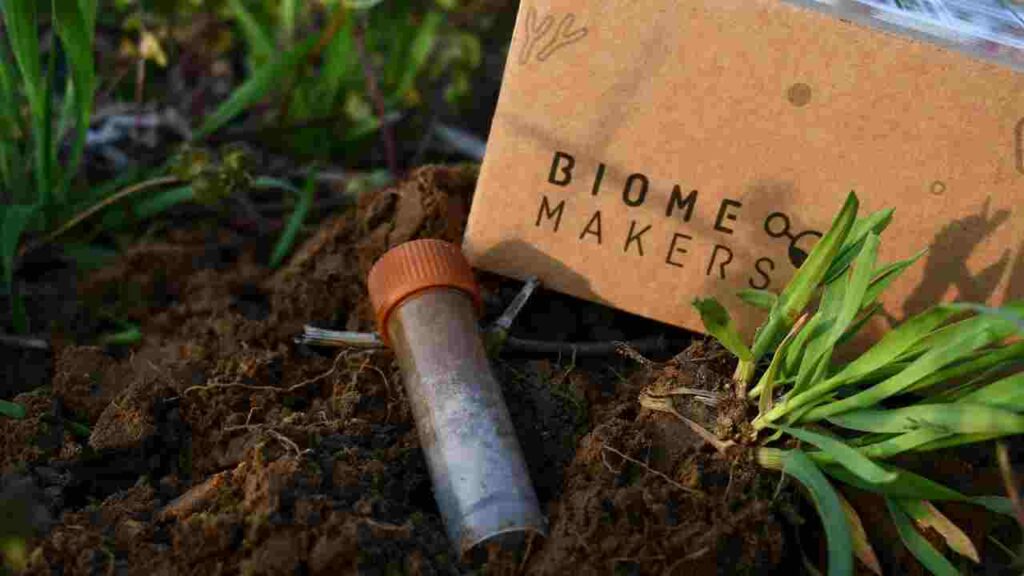Fertilizing your lawn at the right times is key to keeping it healthy and vibrant, especially in Liberty Township’s unique climate. The timing of your lawn fertilization can significantly impact its growth, color, and overall health. In Liberty Township, the ideal times to fertilize your lawn are during the spring and fall. Spring fertilization helps your grass recover from winter and prepare for the growing season, while fall fertilization strengthens roots and prepares your lawn for the winter months. In this guide and along with the extensive guidance of Liberty Heritage Nursery Farm, we will explore the best practices for fertilizing your lawn, including the types of fertilizers to use and how to adjust your schedule based on local conditions.

Adjusting your fertilization schedule according to the specific needs of your grass type and local weather conditions will ensure your lawn thrives throughout the year. Landscaping services can provide valuable insights and assistance in fine-tuning your fertilization plan based on your lawn’s condition and seasonal changes. Regularly monitoring your lawn’s health and making adjustments as needed, such as changing fertilizer types or application rates, can lead to optimal growth and a lush, green lawn. Additionally, considering factors like soil tests and rainfall patterns will help tailor your approach for the best results.
Best Times to Fertilize Your Lawn in Liberty Township
In Liberty Township, the best times to fertilize your lawn are during the spring and fall. Spring fertilization helps your grass recover from winter dormancy and kick-starts growth as the weather warms. This is when you should apply a balanced fertilizer to promote robust growth. Fall fertilization, on the other hand, prepares your lawn for the winter months by strengthening the roots and improving overall resilience. Applying a high-phosphorus fertilizer in the fall ensures that the grass has the nutrients needed to survive and thrive when the growing season resumes. Timing your fertilization according to these seasons, and considering the benefits of professional landscaping, will help maintain a healthy, lush lawn throughout the year.
Spring Fertilization Tips for a Healthier Lawn
Spring fertilization is crucial for rejuvenating your lawn after the winter months. Start by applying a balanced fertilizer that contains equal parts nitrogen, phosphorus, and potassium to promote even growth. Choose a slow-release formula to provide nutrients gradually, which supports sustained growth. Apply fertilizer when the soil temperature reaches around 55°F, as this is when grass begins to actively grow. Avoid over-fertilizing, as it can lead to excessive growth and increased susceptibility to pests and diseases. Regular watering after fertilization helps the nutrients penetrate the soil and reach the roots effectively. Additionally, incorporating landscaping with edibles can complement your fertilization efforts, enhancing both the beauty and functionality of your outdoor space. By following these tips, you’ll set the stage for a vibrant, healthy lawn throughout the growing season.
Fall Fertilization Strategies for Winter Preparation
Fall fertilization is essential for preparing your lawn for the winter months and ensuring it emerges strong in spring. Focus on applying a fertilizer with a higher phosphorus content to enhance root development and overall strength. The goal is to build a strong root system that can withstand winter conditions and support new growth in the spring. Apply the fertilizer after the last mowing of the season, when the grass is still growing but slowing down. Make sure to water the lawn thoroughly after application to help the nutrients reach the root zone. Fall fertilization not only boosts winter resilience but also ensures a quicker, more robust green-up when spring arrives.
Choosing the Right Fertilizer for Your Grass Type
Selecting the appropriate fertilizer for your grass type is crucial for achieving optimal lawn health. Different grass types have varying nutrient requirements. For cool-season grasses like Kentucky bluegrass or fescue, a balanced fertilizer with a higher nitrogen content is ideal during the growing season. Warm-season grasses, such as Bermuda or zoysia, benefit from a fertilizer with a higher potassium content, especially in the heat of summer. Always read the fertilizer label to ensure it meets the specific needs of your grass type. Consulting with a local extension service or lawn care professional can also provide tailored recommendations based on your lawn’s unique conditions.
Understanding Local Weather Conditions for Fertilization
Local weather conditions significantly influence the timing and effectiveness of your fertilization efforts. In Liberty Township, temperature and rainfall patterns play a key role in determining when to apply fertilizer. Avoid fertilizing before heavy rains, as this can lead to runoff and nutrient loss. Similarly, apply fertilizers when temperatures are moderate to prevent stress on the grass. In spring, wait until soil temperatures are consistently warm to ensure that the grass is actively growing and can absorb nutrients effectively. By aligning your fertilization schedule with local weather conditions, you can enhance nutrient uptake and maintain a healthy lawn.
How to Adjust Fertilizer Application Rates
Adjusting fertilizer application rates is important to avoid over-fertilizing and ensure your lawn gets the right amount of nutrients. Follow the recommendations on the fertilizer package, which often provide guidance based on the lawn size and type. Use a spreader for even application and calibrate it according to the product’s instructions. If your lawn has specific nutrient deficiencies, such as low phosphorus levels, you may need to adjust the rates or choose a specialized fertilizer. Monitoring your lawn’s response to fertilization can help you fine-tune the rates over time, ensuring optimal growth without causing environmental harm or excessive thatch buildup.
The Benefits of Soil Testing Before Fertilizing
Soil testing before fertilizing offers valuable insights into your lawn’s nutrient needs and overall health. A soil test measures the levels of essential nutrients, pH balance, and organic matter content, helping you make informed decisions about fertilization. By identifying specific deficiencies or imbalances, you can choose the right type and amount of fertilizer to address those issues. Soil testing also helps avoid over-fertilization, which can lead to environmental pollution and lawn damage. Testing is typically done by sending a soil sample to a local extension service or laboratory. The results guide you in tailoring your fertilization strategy for the best possible lawn health.

Impact of Rainfall Patterns on Fertilization Schedule
Rainfall patterns affect the timing and effectiveness of your fertilization schedule. In areas with frequent rain, such as Liberty Township, avoid fertilizing just before heavy rainstorms to prevent nutrient runoff and waste. Instead, choose a time when rain is less frequent or apply fertilizer before a light, steady rain that can help the nutrients penetrate the soil. For periods of drought, consider adjusting your fertilization schedule and providing supplemental watering to help the fertilizer dissolve and reach the root zone. By adapting your fertilization schedule to local rainfall patterns, you can maximize nutrient absorption and maintain a healthy, green lawn.
Common Mistakes to Avoid When Fertilizing Your Lawn
When fertilizing your lawn, it’s important to avoid common mistakes that can hinder results or cause damage. One common error is over-fertilizing, which can lead to excessive growth, increased vulnerability to pests, and environmental runoff. Another mistake is applying fertilizer during extreme weather conditions, such as intense heat or heavy rain, which can reduce effectiveness. Additionally, failing to follow application instructions and using the wrong type of fertilizer for your grass type can also negatively impact your lawn. Avoiding these mistakes by carefully reading labels, adhering to application guidelines, and timing your fertilization appropriately will help you achieve a healthy, lush lawn.
How Landscaping Services Can Help with Fertilization
Landscaping services offer expertise and convenience in managing your lawn’s fertilization needs. Professionals can perform a thorough assessment of your lawn’s condition and provide tailored recommendations based on soil tests and local conditions. They have access to high-quality fertilizers and equipment, ensuring precise application and optimal results. Additionally, landscaping services can help schedule and track fertilization throughout the year, taking the guesswork out of timing and application rates. By leveraging their knowledge and experience, you can maintain a vibrant, healthy lawn without the hassle of DIY fertilization, allowing you to focus on enjoying your outdoor space.
Long-Term Benefits of a Proper Fertilization Schedule
Maintaining a proper fertilization schedule offers numerous long-term benefits for your lawn. Consistent, well-timed fertilization promotes healthy grass growth, enhances color, and improves resistance to pests and diseases. Over time, a balanced fertilization regimen helps build strong root systems, which support overall lawn health and drought resilience. Regular fertilization also helps prevent nutrient deficiencies and ensures that your lawn receives the necessary nutrients for sustained vitality. By adhering to a thoughtful fertilization schedule, you invest in the long-term health and aesthetics of your lawn, contributing to a lush, green outdoor space that enhances your property’s value and curb appeal.
Conclusion
Maintaining an effective fertilization schedule is key to achieving a vibrant and healthy lawn in Liberty Township. By timing your applications in spring and fall, and choosing the right fertilizer for your grass type and local weather conditions, you can enhance your lawn’s growth and resilience. Avoiding common mistakes and considering professional landscaping services can further optimize your results. Soil testing and adjusting application rates based on your lawn’s specific needs ensure you provide the right nutrients without overdoing it. With careful planning and regular maintenance, you’ll enjoy a lush, green lawn that not only boosts your property’s curb appeal but also supports long-term lawn health and sustainability.
FAQs
When is the best time to fertilize my lawn in Liberty Township?
Fertilize your lawn in early spring to kickstart growth after winter and in late fall to strengthen roots before winter. Timing ensures optimal nutrient uptake and lawn health.
How often should I fertilize my lawn?
Typically, lawns should be fertilized twice a year—once in the spring and once in the fall. Adjust based on grass type and specific lawn needs for best results.
What type of fertilizer is best for my lawn?
Use a balanced, slow-release fertilizer suited to your grass type and local soil conditions. A soil test can help determine the ideal nutrient mix.
Can I over-fertilize my lawn?
Yes, over-fertilizing can harm your lawn by causing excessive growth, nutrient imbalances, or environmental issues like runoff. Follow recommended application rates and guidelines.
Should I test my soil before fertilizing?
Yes, soil testing helps determine nutrient levels and pH, ensuring you use the right fertilizer and apply the correct amounts. This promotes better lawn health and reduces waste.
